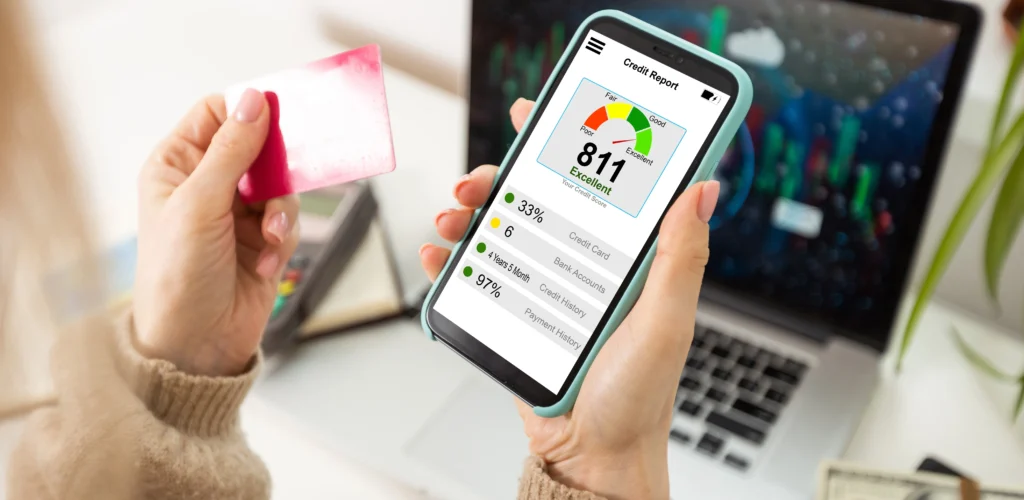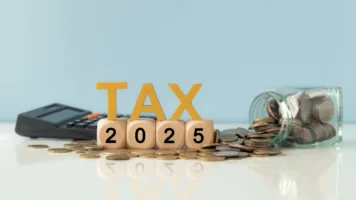How To Fix Your Credit Rating
It may not happen overnight, but little by little you might find your once stellar credit score dropping as life happens. Making a late payment or putting too much on your credit card might seem like temporary problems, but if your credit turns sour, it can hurt your chances of financial success.
So if you recently discovered your credit score isn’t quite where you’d like it to be, then you should read on for our top 5 tips on how to fix your credit rating. From learning how to manage your money to auto-paying your bills and using a small personal loan to consolidate your debts, these are the best ways to fix your credit score in Australia.
Overview
- What is a bad credit rating?
- How do you get a bad credit rating?
- Why is a good credit rating important?
- How long does bad credit last?
- 5 tips on how to fix your credit rating
- Check your credit report carefully
- Autopay your bills
- Avoid negative listings
- Don’t make too many hard credit enquiries
- Consider a debt consolidation loan
What is a bad credit rating?
In Australia, there are three major credit reporting bodies, and there are slight differences in what they consider a bad or low credit rating. These are:
Experian, for example, considers a score of 0 to 549 (out of 1,000) to be below average. Whereas Equifax states that a score of 0-505 (out of 1,200) to be below average. It’s best that you check your score with a credit reporting body and compare it against their scoring system.
How do you get a bad credit rating?
Missed repayments, debt agreements, bankruptcy and loan defaults can all negatively impact your credit rating.
Why is a good credit rating important?
Whether you’re looking to buy a home, a car, or just some new furniture, you’ll likely apply for a loan at some point in your life. Having good credit doesn’t just give you a higher chance of being approved, it also gives you access to better terms and interest rates that may help you save on interest paid long term.
How long does bad credit last in Australia?
According to Money Smart, a default stays on your account for five to seven years depending on the severity of the credit infringement. If you pay the debt off, the default will still appear on your credit, even though it will show up as paid off.
Now we know why a good credit score is important, keep reading to learn how to fix your credit rating if you have a low score.
How to fix your bad credit rating: 5 tips
1. Check your credit report carefully
Sometimes when you review your credit report, you’ll find a mistake that’s dragging your score down. It’s important to get those fixed quickly and properly. So when you obtain your report, make sure to go over it with a fine tooth comb to ensure that everything is accurate. Look for errors in your personal information, mistaken defaults, old defaults, or incorrect details in your credit history.
If you find an issue in the report, then you need to notify the credit reporting agency in writing. The agency will check the information you provided and fix your report if the information and supporting documentation provide the proof necessary. Keep track of your report and once a mistake is fixed, then you should see a jump in your credit score.
2. Autopay your bills
Always, always pay your bills on time. Even if you have to work out a payment plan with the electric company or only pay part of your credit card bill, it’s better to pay on time than have an ‘over 30 days’ note on your credit report.
Automating your bill payments is the easiest way to ensure you aren’t missing those due dates. Here are a few ways you can automate your bills:
- Split monthly bills into weekly amounts and pay them off in instalments. This is called bill smoothing and is super useful to avoid bill shock.
- Change the due date of your bills to the day you get paid.
- Set up an average billing arrangement with your utilities. This will make your bill the same, smaller, amount every month.
- Put as many bills as you can on autopay. That way it comes out of your account on the exact day it’s supposed to and is never late. You just need to remember this and make sure there is enough money in your account to make the payment.
- And if you’re having problems making a payment, call the lender or company in question. You can appeal for a financial hardship extension or work out a different repayment plan.
3. Avoid negative listings
When it comes to learning how to fix your credit rating, take note of the ‘paying bills on time’ tip here. If you’re over 30 days late on a payment, it will show up on your credit report, and it will stay there for five years. That hurts your credit rating for a long time.
But when it comes to late payments, there’s more to it than just avoiding negative marks — you want to avoid writs, judgments, bankruptcies and clearouts. These can stay on your report for up to seven years.
4. Don’t make too many hard credit enquiries
A hard credit pull involves an enquiry of your credit report from a lender, usually as part of the loan application process. Each hard enquiry temporarily wipes a few points off your credit rating. Lenders may also see too many enquiries as a cry for help which can impact your eligibility as a borrower. If you’ve been turned down after applying for credit, it can be beneficial to take some time before you apply elsewhere.
So, when trying to figure out how to fix your credit rating, it’s best to avoid applying for a bunch of small loans. Instead, before applying for any type of loan, take time to assess the health of your credit score and whether you meet the lender’s eligibility criteria.
To check your credit rating, you can request your own report from any of the three credit reporting agencies; Equifax, Illion, and Experian. Requesting your own credit report is free once every three months per credit agency and does not affect your credit score.
5. Consider a debt consolidation loan
If you’re struggling to pay off debts while keeping up with your bills, a debt consolidation loan could help. This combines all your debts into one simple repayment, reducing the chances of a missed payment that affects your credit score. It can help you manage your monthly budget, and provide you with a clear path to get out of debt.
If you’re struggling with debt and are concerned about your circumstances, contact the National Debt Helpline.
Need a helping hand while you improve your credit score?
Building up your credit score can be a long journey, but the potential benefits are worth the wait. A debt consolidation loan from Swoosh can be the helping hand you need to organise your finances and avoid even more blows to your score. Apply today, or if you just need a little something to tide you over while you fix your credit score, contact our friendly team.









